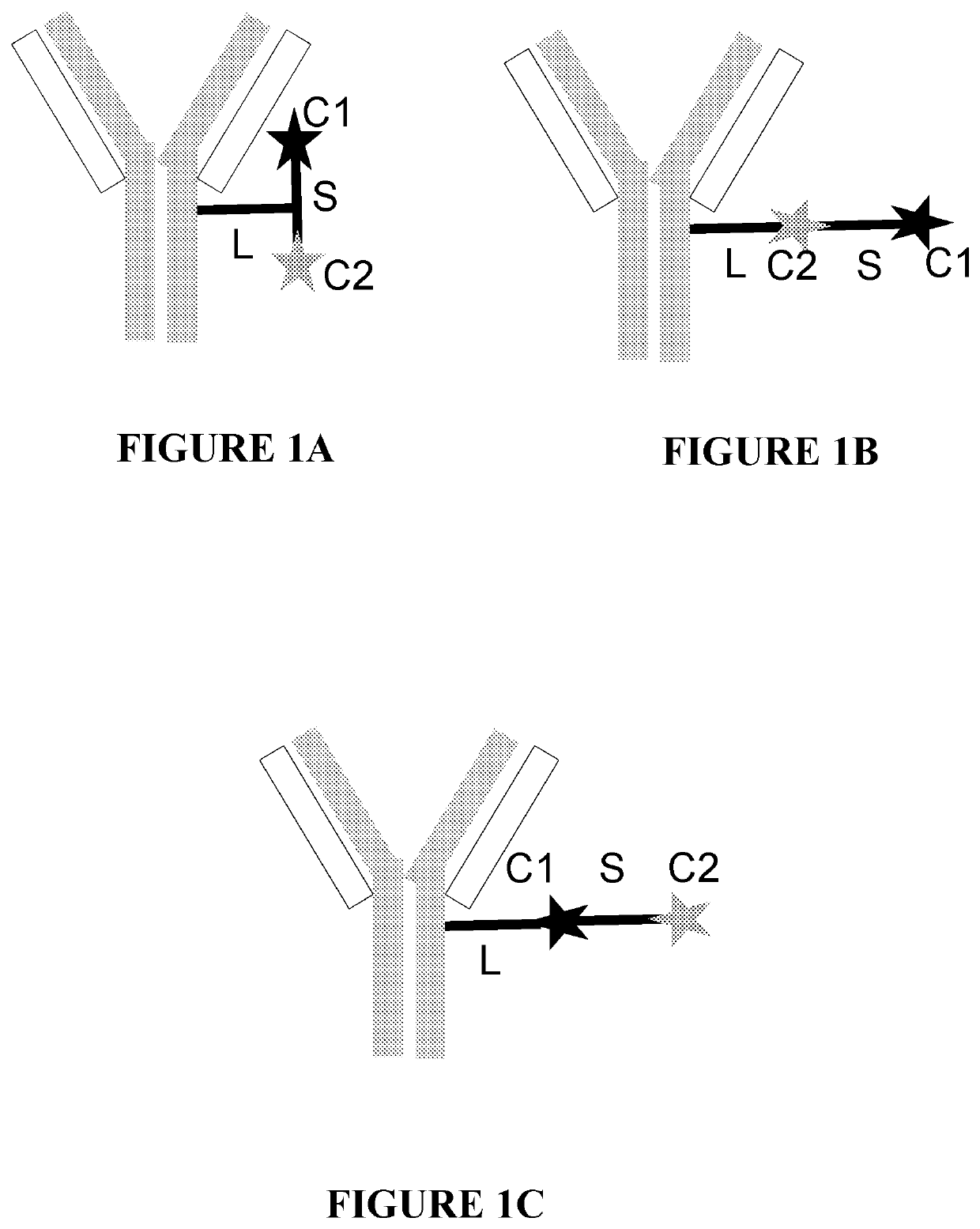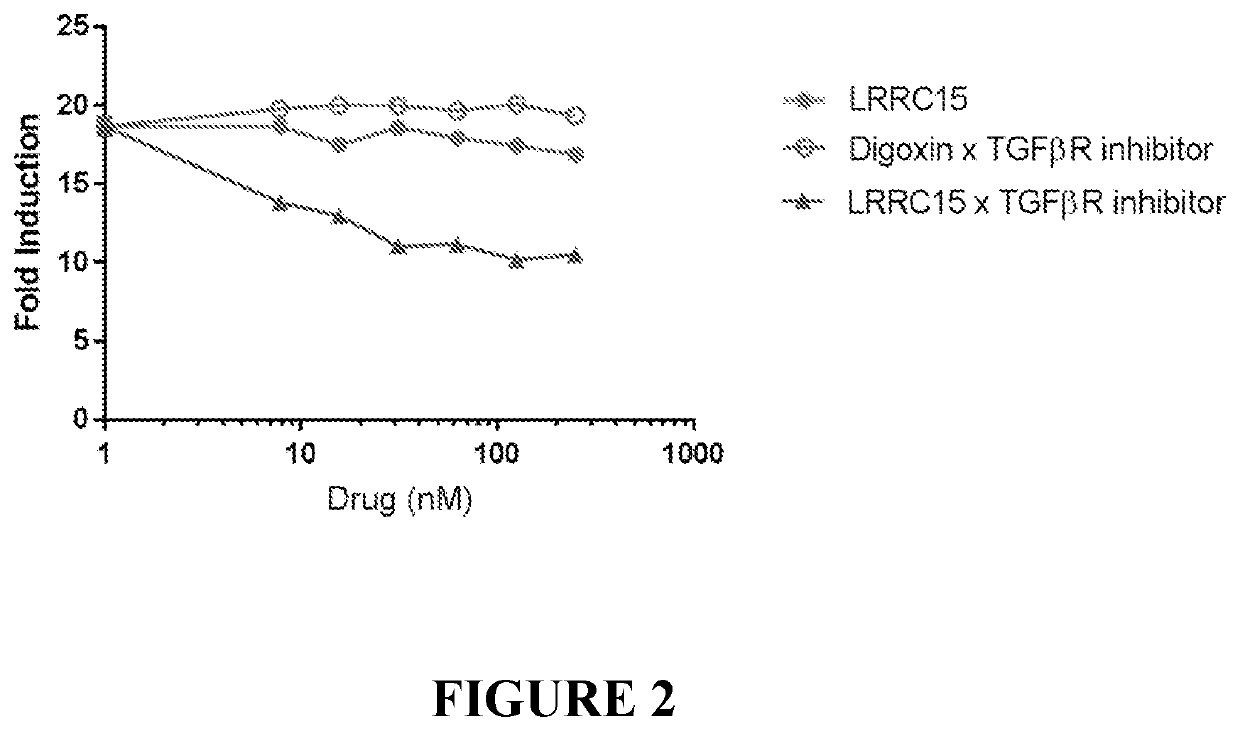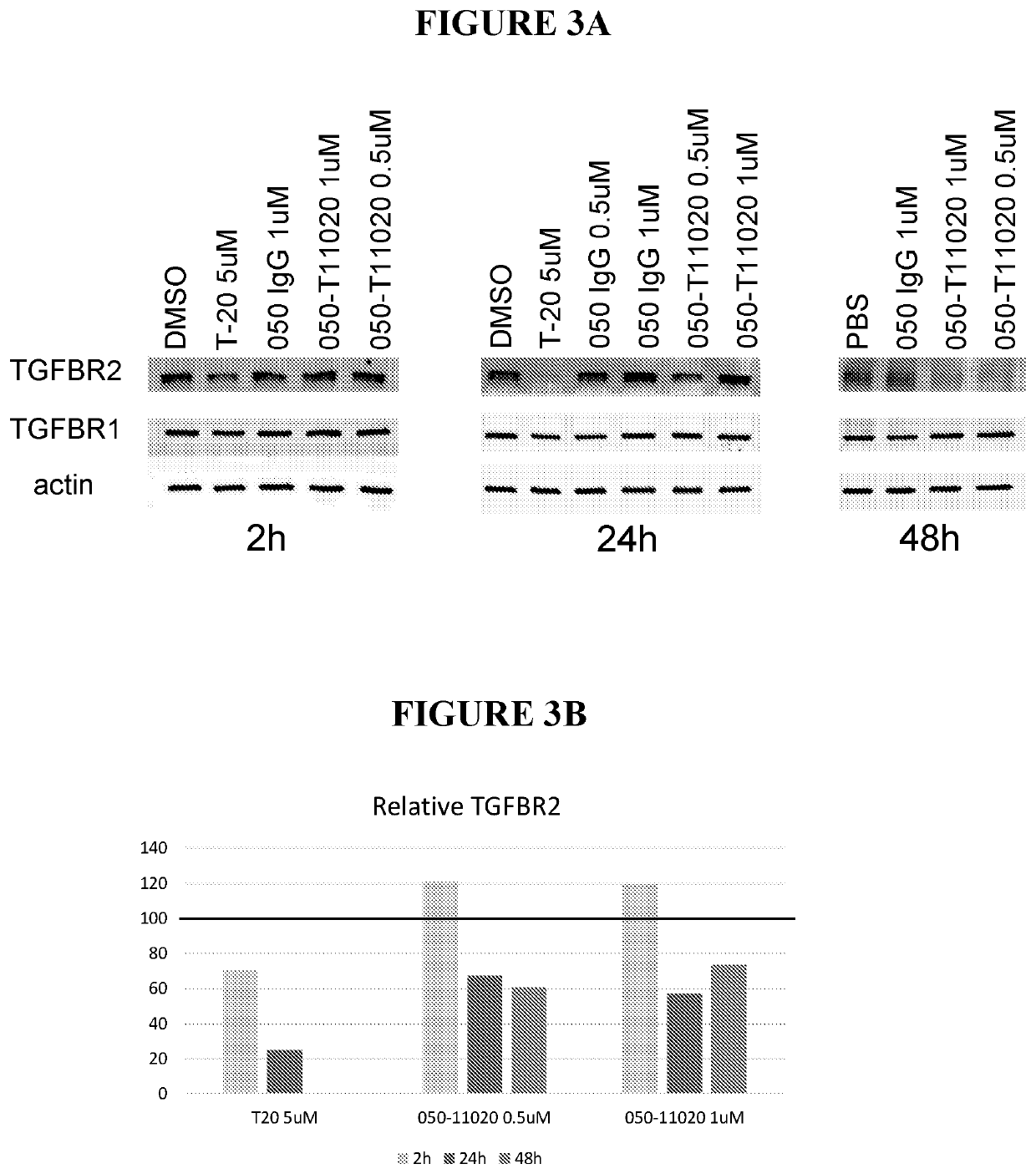Antibody conjugates of immune-modulatory compounds and uses thereof
a technology of immune-modulatory compounds and conjugates, which is applied in the field of antibody conjugates of immune-modulatory compounds, can solve the problems of affecting the body's ability to maintain vital functions, unable to respond to current therapies, and refractory to treatment, so as to increase the degradation of the target protein, and reduce the activity of the protein target
- Summary
- Abstract
- Description
- Claims
- Application Information
AI Technical Summary
Benefits of technology
Problems solved by technology
Method used
Image
Examples
example 1
Synthesis of Immune-Modulatory Compounds, Linker Payloads and Conjugates
[0391]A linker is linked with an immune-modulatory compound such as a PI3K inhibitor, Calcineurin inhibitor, mTOR inhibitor, BTK inhibitor, JAK inhibitor, CRAC inhibitor, PARP1 antagonist, PPARg agonist, Kv1.3 antagonist, KCa3.1 antagonist, PP2A agonist, IRAK4 inhibitor, MYD88 inhibitor, BCL-2 antagonist, A2ar agonist, TLR7 antagonist, c-KIT kinase inhibitor, KCA3.1 agonist, TGFβR1 inhibitor, TGFβR2 inhibitor, ACC antagonist, ASK1 antagonist, GLI1 inhibitor, TNKS antagonist, or TNIK antagonist. A linker linked to an immune-modulatory compound makes a linker-immune-modulatory compound (LP). Subsequently, a LP is conjugated to an antibody construct, such as an antibody, to form an antibody construct immune-modulatory compound conjugate or conjugate.
Inhibitors of TGFβR2
example 1.1
Synthesis of (S)—N1-(4-(5-amino-6-((4-morpholinopyridin-3-yl)carbamoyl)pyrazin-2-yl)benzyl)-2-(6-(4-((2,5-dioxo-2,5-dihydro-1H-pyrrol-1-yl)methyl)-cyclohexane-1-carboxamido)hexanamido)-N5-(2-(3-(((S)-1-((2S,4R)-4-hydroxy-2-((4-(4-methylthiazol-5-yl)benzyl)carbamoyl)pyrrolidin-1-yl)-3,3-dimethyl-1-oxobutan-2-yl)amino)-3-oxopropoxy)ethyl)pentanediamide (Compound 1-1)
[0392]
Step A: Preparation of Int 1B-1
[0393]
[0394]HATU (3.54 g, 9.36 mmol) was added to a solution containing 1.64 g (7.5 mmol) of 3-amino-6-bromopyrazine-2-carboxylic acid in 25 mL of DMF. The reaction was stirred for 5 minutes before adding 2.5 mL (22.5 mmol) of N-methylmorpholine and 1.68 g (9.36 mmol) of 4-morpholinopyridin-3-amine. The reaction mixture was stirred for 16 h then quenched with 10 mL of saturated NH4Cl solution and then 10 mL of water. The mixture was extracted with EtOAc three times; the combined organics were washed with brine and then dried over Na2SO4. The solvent was then evaporated and the residue w...
example 1.2
f 3-amino-6-(4-(2-((2S)-2-(6-(4-((2,5-dioxo-2,5-dihydro-1H-pyrrol-1-yl)methyl)cyclohexane-1-carboxamido)hexanamido)-6-(2-((2-(2,6-dioxopiperidin-3-yl)-1,3-dioxoisoindolin-4-yl)oxy)acetamido)hexanamido)ethyl)phenyl)-N-(4-morpholinopyridin-3-yl)pyrazine-2-carboxamide (Compound 2-1)
[0409]
Step A: Preparation of Int 7B-1
[0410]
[0411]A solution containing 3.0 g (8.0 mmol) of 3-amino-6-bromo-N-(4-morpholinopyridin-3-yl)pyrazine-2-carboxamide and 2.6 g (8.8 mmol) of (4-(2-(((tert-butoxy)carbonyl)-amino)ethyl)phenyl)boronic acid in 50 mL of dioxane and 8 mL of 2N Na2CO3 (16.0 mmol) was degassed and back filled with nitrogen three times. 600 mg (0.8 mmol) of PdCl2 (dppf) was added and the reaction vessel was degassed with nitrogen twice. The reaction mixture was then heated at 90° C. for 3 h then cooled and stirred overnight then filtered through a plug of Celite®. The filtrate was diluted with EtOAc, washed with water and then brine, and dried over Na2SO4. The solvent was then evaporated and ...
PUM
| Property | Measurement | Unit |
|---|---|---|
| molar ratio | aaaaa | aaaaa |
| pharmaceutical composition | aaaaa | aaaaa |
| size | aaaaa | aaaaa |
Abstract
Description
Claims
Application Information
 Login to View More
Login to View More - R&D
- Intellectual Property
- Life Sciences
- Materials
- Tech Scout
- Unparalleled Data Quality
- Higher Quality Content
- 60% Fewer Hallucinations
Browse by: Latest US Patents, China's latest patents, Technical Efficacy Thesaurus, Application Domain, Technology Topic, Popular Technical Reports.
© 2025 PatSnap. All rights reserved.Legal|Privacy policy|Modern Slavery Act Transparency Statement|Sitemap|About US| Contact US: help@patsnap.com



